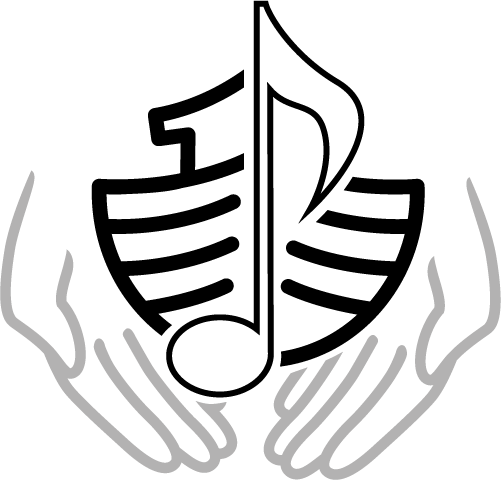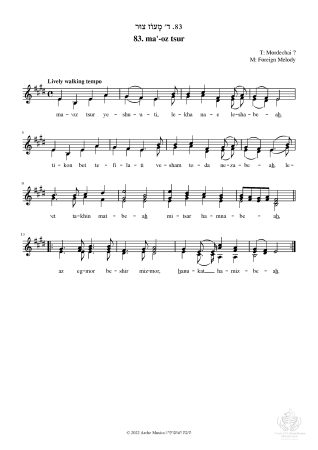מעוז צור | Ma'oz tsur | Rock of Ages (1912)
Artist: Abraham Zvi Idelsohn (1882-1938)
Lyrics: Mordechai?
Tune: Foreign Melody
The popular song Ma'oz tsur is sung on the holiday of Hanukkah. Traditionally, it is sung at home after lighting the festival lights during the eight nights of the holiday. The first and sometimes final verses have entered the oral tradition, while the middle verses, which detail the persecution of the Jewish people over the ages, were censored by Jewish authorities in medieval Europe. Idelsohn included five verses in Sefer Ha-Shirim.
According to Abraham Frenkel (Hama'ayan, 54, Jerusalem, 2004), the lyrics of “Ma'oz tsur” were written on the banks of the Rhine River in the twelfth century. The poem shows the influence of the Iberian (Sephardic) school of medieval poetry on Ashkenazi Jews.
The first letters of the first five stanzas form an acrostic of the author's name, Mordechai. This may have been Mordechai Ben Isaac Ha-Levi or another poet. The poem recounts Jewish history and celebrates deliverance from four ancient enemies: Pharoah, Nebuchadnezzar, Haman, and Antiochus. Like many medieval Jewish poems, it references biblical and rabbinic sources.
The melody was probably adapted from a fifteenth-century Jewish German melody (see Edwin Seroussi, "Maoz Tzur: The Mystifying Wandering of a Hanukkah Anthem" in Song of the Month, December 2020, Jewish Music Research Center, available online at https://www.jewish-music.huji.ac.il/content/22968).
This folk melody was also adapted by Luther for his German chorales. In 1523, he set it to his "Nun freut euch, lieben Christen gmein" [Now Rejoice, Dear Christians]. The opening melody is like the melody to Ma'oz Tsur. The earliest transcription of the Jewish melody is by Isaac Nathan, who set it to the poem "On Jordan’s Banks" in Byron's "Hebrew Melodies" (London, 1815). Later transcriptions have been numerous, and the melody can be found in every collection of Jewish songs.
In his article "Deutsche Elemente im alten Synagogengesang Deutschlands" ["German Elements in the Old Synagogue Song of Germany"] in Zeitschrift fur Musikwissenschaft (1933), Idelsohn claimed that the melody for Maoz Tsur” was known already by Abraham Samuel Bachrach (1575-1615) in 1606. In 1724, the Christian Italian composer Marcello Benedetto published “Maoz Tsur” in his book of 50 psalms for the church, with Hebrew and Italian lyrics and a music transcription notated from right to left. This work reflects the belief that the Jewish people hold the secrets to ancient Christian music. Benedetto was exposed to the melody through German Jews who settled in Italy.
The melody is in a major key and in a marching rhythm.

